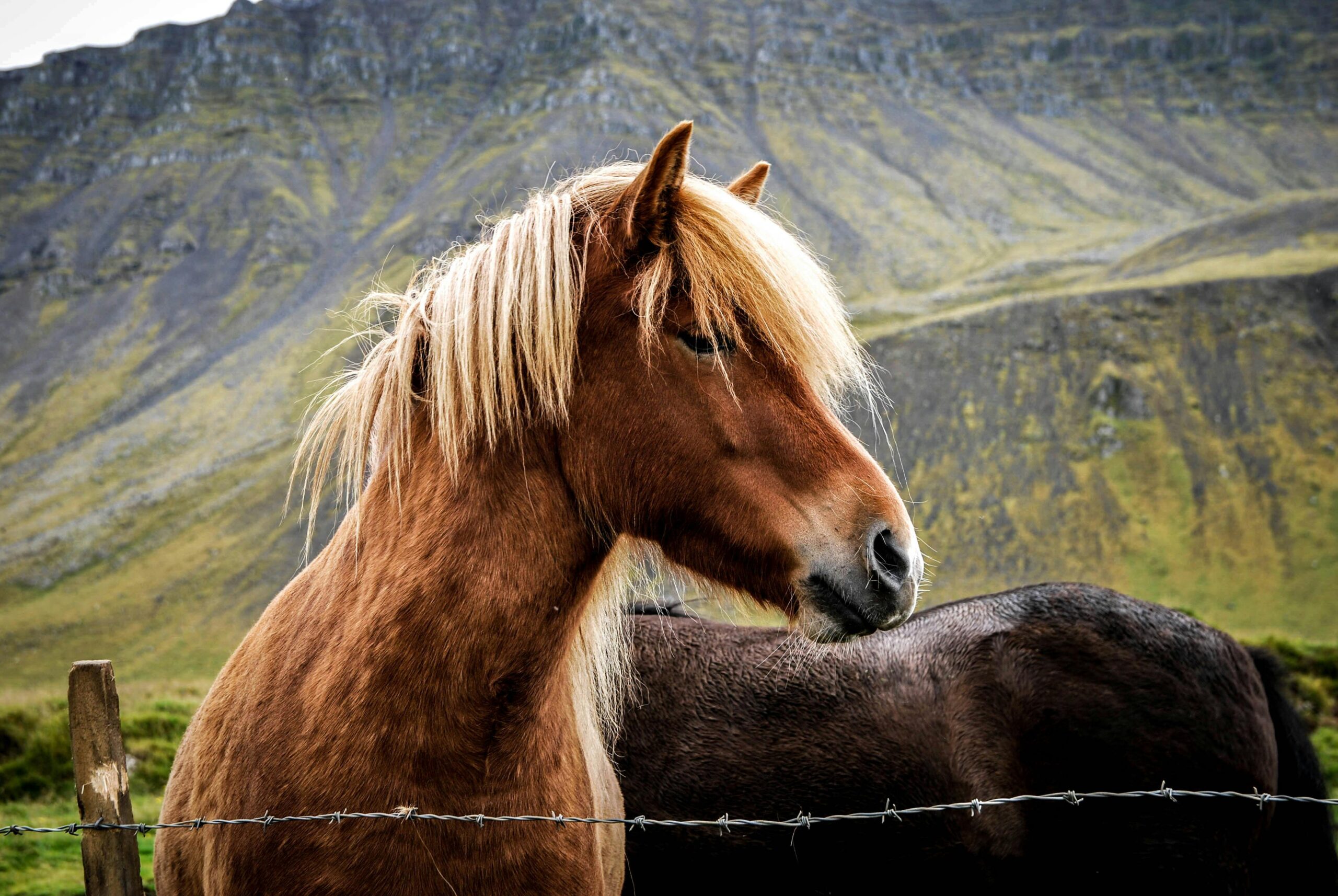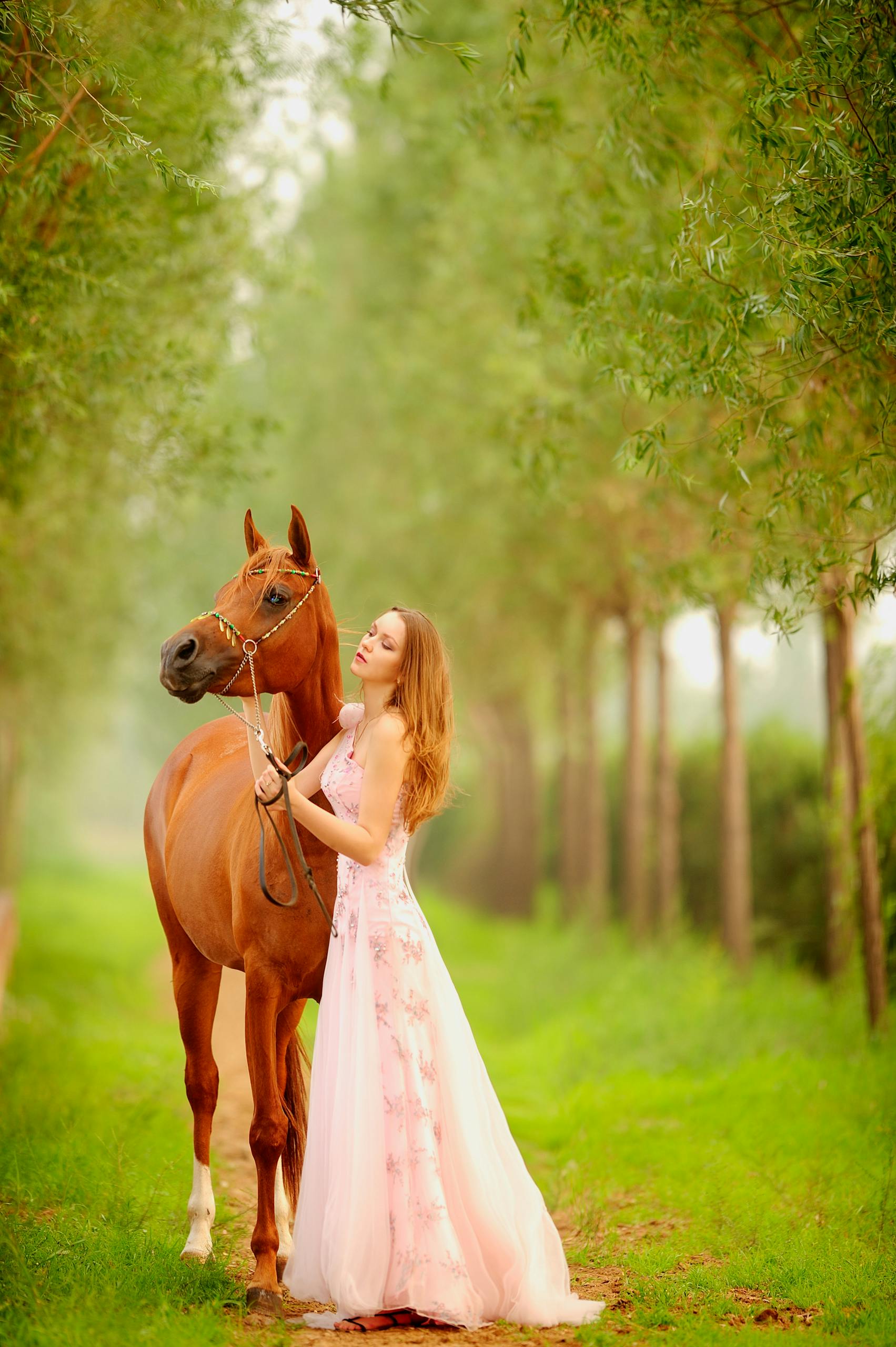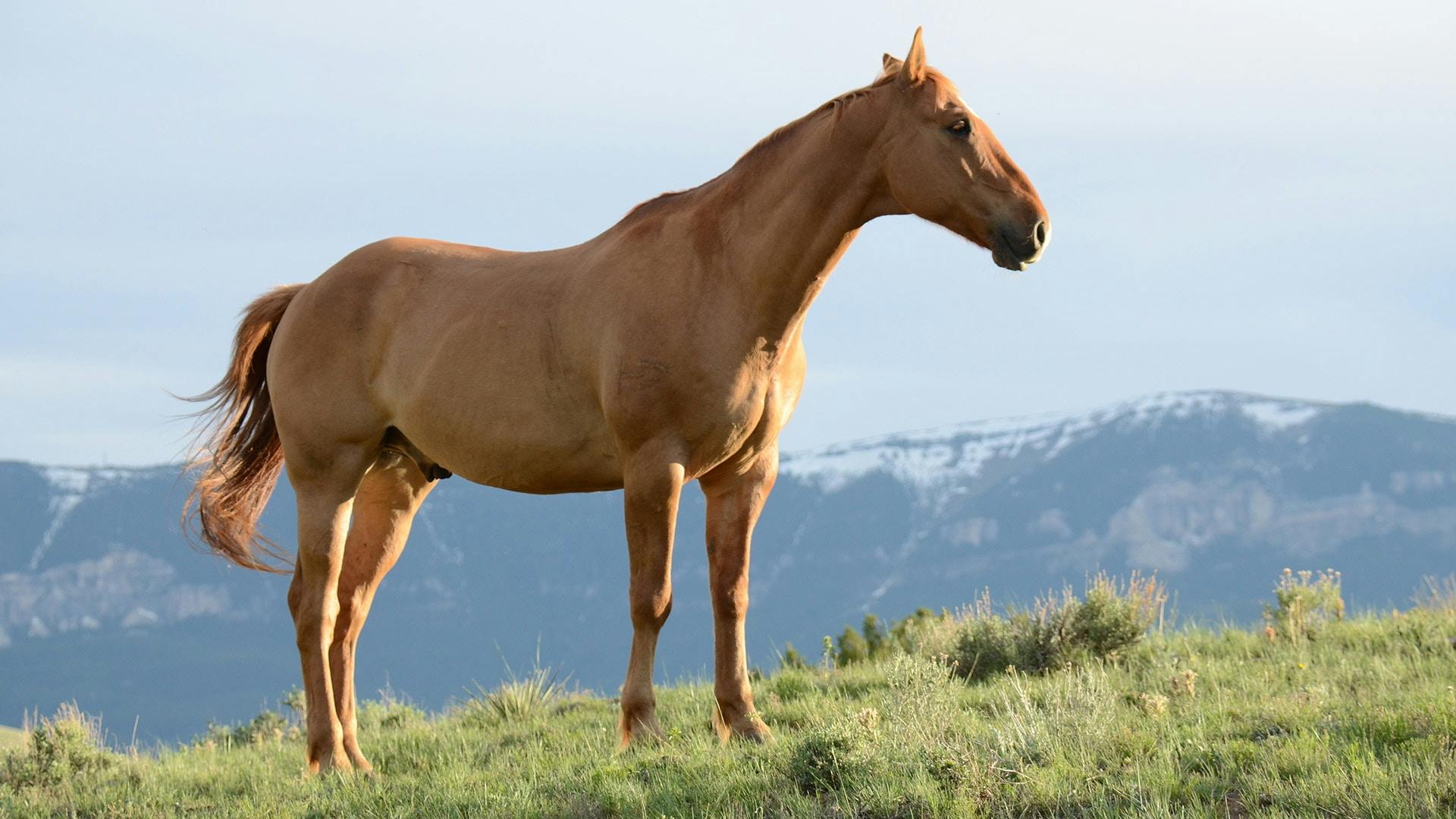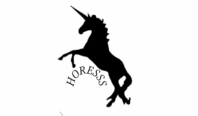Table of Contents
ToggleIntroduction of spanish barb horse
The Spanish Spike horse, known for its strength, flexibility, and exceptional actual qualities, plays had a critical impact in equine history. Starting from the old ponies of the Iberian Promontory and North Africa, the Spanish Point was brought to the Americas by Spanish pilgrims in the sixteenth 100 years. After some time, these ponies adjusted to the different environments and territories of the New World, adding to the improvement of different equine populaces, including the notorious Broncos.
Understanding the verifiable impact of the Spanish Spike is significant for valuing the hereditary and social legacy it has granted to current pony breeds. This’ first experience with new conditions and resulting crossbreeding with native and other imported ponies helped shape the qualities of a few contemporary varieties.
By following the ancestry and impact of the Spanish Spike, we can acquire knowledge into the development of equine varieties, the protection of hereditary variety, and the social meaning of these ponies in various social orders. This investigation features the persevering through tradition of the Spanish Point in the realm of pony reproducing and its enduring effect on the equine local area.
Historical Context
Origins of the Spanish Barb
The Spanish Point horse follows its beginnings to the antiquated ponies of the Iberian Promontory and North Africa. These ponies, known for their strength and perseverance, were reared by different antiquated human advancements, including the Iberians and Berbers. The Iberian ponies, which were little yet powerful, and the North African Thorn ponies, known for their endurance and dexterity, joined to frame the underpinning of what might turn into the Spanish Point. This breed is portrayed by areas of strength for its, particular facial profile, and flexibility, characteristics that were appropriate to both the cruel territories of its local terrains and the difficulties of new conditions.
Role in Spanish Exploration and Colonization
During the Time of Investigation in the fifteenth and sixteenth hundreds of years, Spanish wayfarers and conquerors carried the Spanish Thorn horse with them on their journeys to the Americas. The variety assumed an essential part in Spanish triumphs and colonization, giving solid transportation and supporting military missions. The flexibility and perseverance of the Spanish Thorn were fundamental for travelers exploring the immense and fluctuated scenes of the New World. Its part in these campaigns laid out the Spanish Point as a critical supporter of the progress of Spanish provincial ventures.
Spread to the Americas
As Spanish pioneers and pilgrims set up a good foundation for themselves in the New World, they shipped Spanish Points to their new provinces. These ponies were acquainted with a scope of conditions, from the parched deserts of the southwestern US to the lavish fields of South America. The Spanish Thorn’s capacity to adjust to different circumstances made it an important resource in these new regions. Over the long haul, the variety spread across the Americas, impacting nearby pony populaces and turning into an essential stock for the majority equine varieties.
Transportation of Spanish Barbs to the New World
The transportation of Spanish Spikes included exploring long and laborious ocean journeys. The ponies were delivered across the Atlantic in conditions that tried their versatility. Notwithstanding the difficulties, the Spanish Thorn’s hearty constitution permitted it to persevere through the excursion and flourish in the new world. When shown up, these ponies were incorporated into the regular routine of the provinces, adding to horticulture, transportation, and military necessities.
Adaptation and Integration into Indigenous and Colonial Cultures
In the Americas, Spanish Spikes immediately adjusted to their new surroundings and became coordinated into both native and provincial societies. Native people groups, who had their own customs of pony use, embraced the Spanish Spike for its utility and adaptability. The variety assumed a huge part in the improvement of the nearby pony populaces, impacting the making of new varieties like the Colt. In provincial social orders, the Spanish Spike was fundamental for farming, investigation, and transportation, turning into a foundation of equestrian culture in the Americas. Through this joining, the Spanish Thorn left an enduring effect on the equine legacy of the New World.
Influence on the Mustang
Genetic Contribution
Introduction of the Spanish Barb to Feral Horse Populations
The Spanish Point horse impacted the improvement of the Colt, a variety of wild ponies that wandered the American West. At the point when Spanish voyagers and pioneers showed up in the Americas, they carried Spanish Thorns with them, which were then acquainted with the wild pony populaces. These ponies, alongside others like the Andalusian and the Criollo, added to the hereditary cosmetics of the Broncos through regular rearing and associations with native pony populaces.
Genetic Markers and Traits Inherited by Mustangs
The Colts acquired a few hereditary qualities from the Spanish Point. Investigations of Colt hereditary qualities uncover the presence of explicit hereditary markers related with the Spanish Spike. These markers are connected to attributes like actual perseverance, heartiness, and versatility. The impact of the Spanish Point is apparent in the Broncos’ hereditary variety, which mirrors the mix of the Spanish Spike’s solid constitution with other equine genealogies.
Characteristics Shared
Physical Attributes
Size: The Spanish Point and the Horse share a comparable size range. The two varieties are regularly medium-sized ponies, appropriate to various errands and conditions. The Horse’s size and assemble mirror the Spanish Spike’s impact, adjusting great to the rough scenes of the American West.
Perseverance: The two varieties are known for their uncommon endurance and perseverance. The Spanish Spike’s capacity to endure long excursions and brutal circumstances added to the Bronco’s standing for flexibility and extremely long travel.
Solid Nature: The Spanish Spike’s strong nature, adjusted to the difficult environments of Spain and North Africa, was given to the Colt. This solidness is obvious in the Bronco’s capacity to get by in different and frequently cruel conditions, from deserts to bumpy areas.
Behavioral Traits
Knowledge: Spanish Spikes are known for their insight, a characteristic that was acquired by the Colt. Broncos display critical abilities to think and a sharp feeling of mindfulness, characteristics fundamental for endurance in nature.
Flexibility: The Spanish Spike’s versatility to different conditions is reflected in the Bronco’s capacity to flourish in assorted conditions across North America. This flexibility is reflected in the Bronco’s adaptability in various territories and environments.
Personality: The two varieties are known for their quiet and consistent disposition. The Colt’s disposition benefits from the Spanish Point’s characteristics of flexibility and consistent quality, making them solid and reasonable ponies in a scope of circumstances.
The hereditary and conduct commitments of the Spanish Spike to the Bronco feature the persevering through effect of this notable variety. The Colt’s qualities today are a demonstration of the Spanish Thorn’s inheritance, showing how the acquaintance of the Spanish Point with the Americas formed the improvement of one of North America’s most notable pony breeds.
Influence on the Andalusian and Lusitano Breeds
Shared Heritage
Common Ancestry with Iberian Horses
The Spanish Spike’s impact on the Andalusian and Lusitano breeds is established in their common family line. Every one of the three varieties have normal beginnings in the Iberian Landmass. The Andalusian, otherwise called the Thoroughbred Spanish Pony, and the Lusitano, a variety local to Portugal, both follow their heredity to the old Iberian ponies, which incorporate the Spanish Point. These varieties created from a mix of neighborhood Iberian ponies and those presented by different verifiable impacts, including the Point horse.
Historical Development
During the middle age time frame, the Spanish Point was a critical supporter of the improvement of the Andalusian and Lusitano breeds through crossbreeding and particular reproducing rehearses. Spanish Thorns were utilized to work on the conformity, endurance, and deftness of these ponies, adding to the foundation of the unmistakable characteristics found in the Andalusian and Lusitano today.

Physical and Behavioral Traits
Physical Characteristics
Conformity: The Spanish Thorn’s impact is apparent in the adaptation of both the Andalusian and Lusitano breeds. Each of the three varieties share a comparative body structure described by a minimized, solid form with areas of strength for a, curved neck and a wide chest. The Andalusian is known for its exquisite, yet strong physical make-up, while the Lusitano likewise shows a refined form with a comparative strength and physicality.
Development: The Spanish Thorn added to the trademark development of the Andalusian and Lusitano breeds. The two varieties are known for their high, drifting walks and great assortment, which can be followed back to the Point’s impact. The Andalusian is especially prestigious for its nimbleness and effortlessness in dressage, while the Lusitano is valued for its exhibition in bullfighting and old style riding, mirroring its common legacy with the Spanish Thorn.
Behavioral Traits
Personality: The Spanish Point’s quiet and consistent demeanor is reflected in both the Andalusian and Lusitano breeds. These ponies are known for their knowledge, teachability, and agreeable nature. The Andalusian, specifically, is commended for its submissive and anxious to-satisfy demeanor, which makes it an inclined toward breed in serious dressage and equestrian expressions. The Lusitano, while likewise having a delicate disposition, is perceived for its valiance and versatility, particularly in the requesting climate of bullfighting.
Flexibility: The flexibility of the Spanish Point added to the adaptability of the Andalusian and Lusitano breeds. The two varieties are fit for flourishing in different equestrian disciplines and conditions. The Andalusian’s flexibility is apparent in its fruitful combination into dressage, working equitation, and driving, while the Lusitano’s adaptability is displayed in its parts in customary Portuguese equestrian practices and cutthroat occasions.
The Spanish Spike’s effect on the Andalusian and Lusitano breeds highlights its huge job in molding the physical and social attributes of these regarded Iberian ponies. The common legacy features how verifiable crossbreeding and particular rearing practices added to the advancement of probably the most celebrated horse breeds in this present reality.
Contribution to Gaited Breeds
Gaited Horse Breeds
Identification of Specific Gaited Breeds Influenced by the Spanish Barb
The Spanish Spike has made critical commitments to a few gaited horse breeds, especially those known for their unmistakable and smooth walks. The variety’s impact is clear in the accompanying gaited horse breeds:
Paso Fino: Starting from the Spanish-speaking Caribbean and Latin America, the Paso Fino is prestigious for its exceptional, smooth walk called the “Paso Fino.” The variety’s ancestry incorporates the Spanish Point, which added to the refinement of its step and in general qualities.
Peruvian Paso: Otherwise called the Peruvian Paso or Peruvian Pasuño, this breed is local to Peru and is popular for its normal, four-beat parallel walk called the “Paso Llano” and the “Sobreandando.” The Spanish Spike’s commitment is apparent in the variety’s perseverance and smooth riding characteristics.
Cuban Paso: Like the Paso Fino, the Cuban Paso is one more variety affected by the Spanish Thorn. It includes a smooth, cadenced stride that is profoundly esteemed in Cuban equestrian customs.
Gait Characteristics
Influence on Unique Gaits
Ambling Gaits:The Spanish Point added to the advancement of the wandering steps seen in gaited breeds. Strolling strides are described by a smooth, four-beat cadence where each foot moves freely, which brings about a more agreeable ride contrasted with the customary run. This perfection is a vital quality in breeds like the Paso Fino and Peruvian Paso, where the accentuation is on an agreeable, easy riding experience.
Smooth Riding Characteristics: One of the trademark commitments of the Spanish Point to gaited breeds is the perfection of their steps. The variety’s impact should be visible in the improvement of steps that decrease bumping developments, giving a more liquid and pleasant ride. For example, the Paso Llano of the Peruvian Paso and the Paso Fino stride are known for their perfection, which is a consequence of the hereditary contribution from the Spanish Spike and its relatives.
Perseverance and Endurance: The Spanish Point’s perseverance and endurance have additionally been acquired by gaited breeds. These characteristics add to the pony’s capacity to keep a reliable, smooth stride over significant distances, making them ideal for both sporting and serious riding.
The Spanish Point’s effect on gaited breeds is a demonstration of its flexible hereditary heritage. Its commitment to the improvement of smooth, agreeable steps lastingly affects a few gaited breeds, upgrading their riding characteristics and allure in different equestrian disciplines.
Influence on Other Modern Breeds
Crossbreeding and Development
Role in the Development of Various North and South American Horse Breeds
The Spanish Spike’s hereditary impact reaches out past the notable varieties like the Horse and gaited breeds. Through crossbreeding, the Spanish Spike has added to the improvement of a few North and South American pony breeds:
American Quarter Pony: The Spanish Spike, alongside other Iberian ponies, assumed a critical part in the production of the American Quarter Pony. Early pilgrims and farmers utilized Spanish Thorns to foster this variety, which is known for its speed, nimbleness, and flexibility in different equestrian disciplines, particularly in rodeo and working farm exercises.
Criollo: Starting in South America, especially in Argentina, Uruguay, and Brazil, the Criollo horse has Spanish Spike family line. The variety is known for its strength, flexibility, and capacity to deal with different and rough conditions, mirroring the Spanish Point’s effect on its turn of events.
Chilean Pony: The Chilean Pony, otherwise called the Caballo Chileno, is one more variety affected by the Spanish Spike. Created in Chile, this breed shows the Spanish Spike’s attributes of perseverance and strength, and is utilized in different equestrian exercises, including conventional Chilean rodeo.
Racking Pony: In the US, the Racking Pony breed has likewise been affected by the Spanish Spike. The variety is known for its interesting smooth walk, a characteristic acquired from the Spanish Thorn and its connected varieties, utilized for agreeable riding and driving.
Enduring Traits
Hardy Constitution
The Spanish Spike’s solid constitution has been given to numerous cutting edge breeds. This characteristic is described by:
Strength: The capacity to flourish in different and frequently brutal conditions, like the rough territories of the American West or the assorted environments of South America. This flexibility is found in breeds like the Criollo and American Quarter Pony, which are known for their solidness and capacity to deal with testing conditions.
Wellbeing and Life span: The Spanish Spike’s hereditary impact adds to the general wellbeing and life span of its relative varieties. These varieties frequently display less medical problems and a more drawn out life expectancy, part of the way because of the vigorous hereditary establishment given by the Spanish Thorn.
Versatility
The Spanish Point’s flexibility is reflected in the great many current varieties that show its characteristics. This incorporates:
Multi-Disciplinary Use: Breeds impacted by the Spanish Point are in many cases utilized in different equestrian disciplines, including farm work, rodeo, perseverance riding, and serious occasions. The Spanish Thorn’s flexibility and expertise in various undertakings have added to the adaptability of breeds like the American Quarter Pony and the Racking Pony.
Versatility: The capacity to adjust to various conditions and uses is a key characteristic acquired from the Spanish Thorn. This adaptability permits relative varieties to succeed in different jobs, from working cows on farms to partaking in cutthroat occasions.
Stamina
The endurance of the Spanish Spike lastingly affects present day breeds:
Perseverance: Breeds like the Criollo and American Quarter Pony show outstanding perseverance and endurance, permitting them to perform well in extremely long rides and truly requesting errands. This quality is an immediate tradition of the Spanish Thorn’s capacity to deal with difficult circumstances.
Execution: The endurance acquired from the Spanish Spike adds to the exhibition of present day breeds in aggressive and working conditions. The capacity to support exertion overstretched periods is a significant resource in equestrian games and exercises.
The Spanish Spike’s commitment to present day horse breeds highlights its enduring impact on equine hereditary qualities and execution. The variety’s attributes of strength, flexibility, and endurance proceed to shape and improve the qualities of numerous contemporary pony breeds.
Genetic Studies and Research
Research Findings
Summary of Genetic Research Tracing the Influence of Spanish Barb Lineage in Modern Breeds
Late hereditary examinations have given important experiences into the impact of the Spanish Spike on different present day horse breeds. Key discoveries include:
Hereditary Markers: Exploration has distinguished explicit hereditary markers related with the Spanish Spike in a few relative varieties. These markers are connected to characteristics like endurance, perseverance, and flexibility. For instance, hereditary examination has shown that Broncos, Criollo ponies, and different varieties display markers that follow back to their Spanish Thorn predecessors.
Hereditary Variety: Studies have exhibited that the hereditary variety saw in breeds like the Horse and Criollo can be ascribed, to some degree, to the commitment of the Spanish Spike. This variety incorporates a scope of qualities acquired from the Thorn, like actual compliance and conduct qualities.
Impact on Gaited Breeds: Hereditary examination has additionally followed the impact of the Spanish Spike on gaited breeds like the Paso Fino and Peruvian Paso. The presence of hereditary markers connected with smooth, sauntering walks in these varieties mirrors the Spanish Spike’s effect on their turn of events.
Crossbreeding Effect: Examinations concerning authentic crossbreeding rehearses uncover how the Spanish Thorn was utilized to upgrade different varieties. The hereditary tradition of the Thorn is obvious in different present day breeds, showing its job in forming their improvement through particular rearing.

Importance of Genetic Preservation
Discussion on the Preservation of Genetic Diversity and Its Implications for Future Breeding Programs
The protection of hereditary variety is urgent for keeping up with the wellbeing and versatility of pony breeds impacted by the Spanish Thorn. Key perspectives include:
Keeping up with Hereditary Wellbeing: Saving the hereditary variety of breeds forestalls the adverse consequences of inbreeding, like hereditary problems and decreased ripeness. By keeping a different genetic stock, raisers can guarantee the drawn out wellbeing and essentialness of present day horse breeds.
Preservation of Attributes: The Spanish Point has contributed significant qualities to many varieties, including endurance, perseverance, and adaptability. Safeguarding the hereditary variety related with these qualities guarantees that people in the future of ponies keep on showing the attributes that have been molded by the Spanish Point’s impact.
Reproducing Projects: Future rearing projects benefit from hereditary conservation endeavors by using assorted hereditary assets to improve breed characteristics. By consolidating hereditary data from Spanish Spike relatives, raisers can settle on informed choices to improve and keep up with positive attributes in their rearing stock.
Authentic and Social Worth: Safeguarding the hereditary legacy of the Spanish Thorn likewise has verifiable and social importance. It takes into account the proceeded with appreciation and comprehension of the variety’s effect on present day equine populaces, improving our insight into equine history and hereditary qualities.
Endeavors to protect hereditary variety in horse breeds impacted by the Spanish Thorn are fundamental for guaranteeing the proceeded with progress and flexibility of these varieties. Through continuous exploration and capable rearing practices, we can keep up with the significant qualities acquired from the Spanish Point and backing the wellbeing and imperativeness of future generations of horses.
Conclusion
The Spanish Point horse has made significant and enduring commitments to the improvement of present day horse breeds. From its beginnings in the Iberian Promontory and North Africa to its critical job in the Americas, the Spanish Spike’s impact is clear across a great many equine varieties. Its hereditary heritage is a foundation in the development of breeds like the Bronco, Andalusian, Lusitano, and different gaited breeds like the Paso Fino and Peruvian Paso.
The Spanish Thorn’s commitments are found in a few key regions:
Hereditary Impact: The variety’s hereditary markers have molded the qualities of numerous cutting edge ponies, giving attributes like perseverance, versatility, and smooth steps. Research has featured the Spanish Spike’s job in improving the endurance and adaptability of different varieties.
Physical and Social Attributes: The Spanish Spike has impacted the actual adaptation and conduct characteristics of various pony breeds. Breeds like the American Quarter Pony and Criollo show the hearty constitution, spryness, and knowledge that are signs of the Spanish Point.
Gaited Breeds: The novel steps of breeds, for example, the Paso Fino and Peruvian Paso mirror the Spanish Thorn’s effect on the improvement of smooth, open to riding encounters. These walks are an immediate consequence of the hereditary commitment from the Spanish Point.
The persevering through tradition of the Spanish Spike is clear in contemporary equestrian culture and reproducing rehearses. Its impact is praised through the proceeded with progress and prevalence of present day breeds that owe their attributes to this memorable pony. The Spanish Point’s job in forming equine history highlights its significance as a fundamental variety as well as an image of versatility and flexibility.
As we push ahead, progressing endeavors to protect the hereditary variety of pony breeds will guarantee that the Spanish Spike’s inheritance stays an energetic piece of equestrian legacy. The variety’s commitments to current ponies will keep on being valued, celebrated, and based upon in store for equine rearing and culture.

FA&QS
What is the Spanish Barb horse?
The Spanish Thorn is an old type of pony that began from the Iberian Landmass and North Africa. Known for its solidness, perseverance, and flexibility, the Spanish Point assumed an essential part in the improvement of different current pony breeds.
How did the Spanish Barb influence the Mustang breed?
The Spanish Thorn was acquainted with the Americas by Spanish pilgrims. It interbred with wild pony populaces, adding to the improvement of the Horse. The impact is obvious in the Horse’s perseverance, solidness, and generally actual qualities, including its versatility to various conditions.
What role did the Spanish Barb play in the development of the Andalusian and Lusitano breeds?
The Spanish Point, alongside other Iberian ponies, added to the advancement of the Andalusian and Lusitano breeds. These varieties acquired characteristics like the Spanish Point’s particular adaptation, development, and personality, which are reflected in their high, drifting strides and flexible nature.
Which gaited breeds were influenced by the Spanish Barb?
The Spanish Thorn impacted a few gaited horse breeds, including the Paso Fino and Peruvian Paso. These varieties are known for their smooth, strolling walks, which are a consequence of the Spanish Point’s hereditary commitment. The impact is found in their open to riding characteristics and particular strides.
How has the Spanish Barb contributed to other modern horse breeds?
The Spanish Point has added to different North and South American pony breeds through crossbreeding. Breeds, for example, the American Quarter Pony, Criollo, and Chilean Pony show characteristics acquired from the Spanish Point, including endurance, flexibility, and adaptability.
Why is genetic preservation important for breeds influenced by the Spanish Barb?
Protecting hereditary variety is fundamental for keeping up with the wellbeing and flexibility of pony breeds. It forestalls the adverse consequences of inbreeding and guarantees the proceeded with presence of significant qualities like endurance and adaptability. Hereditary conservation additionally keeps up with the authentic and social meaning of the Spanish Point’s impact.
What are the enduring traits of the Spanish Barb in modern breeds?
The Spanish Thorn’s persevering through characteristics in current varieties incorporate a solid constitution, flexibility, and endurance. These characteristics are obvious in the capacity of relative varieties to flourish in different conditions, succeed in different equestrian teaches, and keep up with in general wellbeing and essentialness.
How can breeders ensure they are preserving the Spanish Barb’s legacy?
Raisers can safeguard the Spanish Spike’s heritage by zeroing in on hereditary variety, using verifiable hereditary information in reproducing programs, and advancing the utilization of ponies with known Spanish Point family. This approach keeps up with the advantageous attributes and qualities acquired from the Spanish Thorn.
Where can I find more information about the Spanish Barb and its influence?
For more nitty gritty data, consider counseling books, scholarly diaries, and equine history distributions. A few remarkable sources incorporate “The Spanish Thorn Pony: Its Set of experiences and Impact” by A. M. Silva and examination articles in diaries like the Diary of Equine Hereditary qualities and the Global Diary of Pony Rearing.
